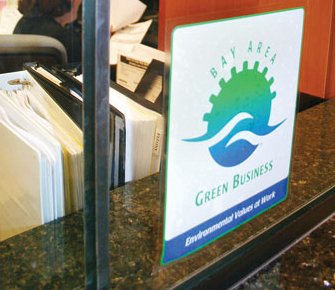Shortly after the police department moved into its current
headquarters a couple years ago, the city slapped a sticker on the
mammoth building proclaiming it a
”
green business,
”
but nobody seemed to care that the station consumes three times
more energy than the old structure, according to city
documents.
Gilroy
Shortly after the police department moved into its current headquarters a couple years ago, the city slapped a sticker on
the mammoth building proclaiming it a “green business,” but nobody seemed to care that the station consumes three times more energy than the old structure, according to city documents.
Gilroy pays nearly $300,000 a year to pump electricity and natural gas through the 105,000-square-foot precinct – half of which functions as a parking garage – on Hanna Street. That’s enough money to cover 2.5 full-time employees plus their benefits contributions, and a marked increase from the $94,000 the city paid on average between 2002 and 2004 to power the old, 17,000-square-foot station across from City Hall on Rosanna Street, according to city figures. In terms of energy, the additional electricity could power 170 single-family homes, and the additional natural gas could heat 50 homes per year, according to state price and consumption data from the U.S. Department of Energy.
“I always assumed we were chewing up a lot of energy,” Sgt. Jim Gillio said in a surprised tone.
With a jail, kitchen and workout facility inside, Gillio said that’s to be expected. Plus, a temperature-controlled room inside the citadel-like structure houses all of the city’s computer servers, and a string of dispatchers and officers come in and out at all hours flipping switches and adjusting thermostats, he said.
The building alone exceeds Gilroy’s entire electricity and natural gas bill from 2001. This year, the building accounts for 41 percent of the tab, which does not include costs for running the city’s traffic and street lights or the electrical expense for pumping water and sewage, which water and waste customers pay, according to Finance Director Christina Turner.
“The city talks a good line about everything, from being a green building to working with employees, but it’s all just talk,” said Tina Acree, business agent for the local chapter of the American Federation of State, County and Municipal Employees, which represents more than 125 Gilroy employees and the vast majority of those who will be laid off Saturday.
“We need a police station – I understand that. But the council bit off more than it could chew here,” Acree said. “There could definitely be better decisions made.”
Councilman Peter Arellano hopes the council will start by making the new library a LEED-certified building, which stands for Leadership in Energy & Environmental Design. The national program imposes commercial building standards that exceed state requirements, and Arellano said the upfront costs of building more sustainable projects will pay for themselves and more as times goes on.
“If we had built the police department building differently, we wouldn’t be paying $300,000 a year,” Arellano said.
Mayor Al Pinheiro agreed, describing the police building as a vestige of the city’s former opulence, and expected every new city building to be LEED-certified.
“The police station is certainly not the green building up to LEED standards that we would build today,” Pinheiro said, adding he relies on City Administrator Tom Haglund – who did not return calls by press time – to save money among the city’s daily operations, including utilities.
The city plans to end the fiscal year in June with a $2.3 million general fund deficit, which the city’s reserve fund will have to cover. Last July, the rainy-day fund held nearly $22 million, but staff expects the balance to drop to $5.5 million by June if the city does cancel or defer major capital projects.
Rolling back the police department’s utility bills could be harder without Environmental Programs Coordinator Lisa Jensema. Before she was laid off, Jensema and another employee worked with the Bay Area Green Business Program to certify the police station and six other city structures since 2005. She said the boastful sticker on the front door was not claiming to have reduced the city’s carbon footprint, but to have encouraged other green practices – increased recycling, warmer clothes during the winter, shuttered blinds during summer, copying on both sides of a page, replacing light bulbs and turning off electronics.
“It sounds really stupid, but these are things we really encourage,” said Lisa Rose, a senior management analyst with the program that relies on public funding and grants to help businesses and governments throughout the Bay Area become greener – and acquire a marketing edge in the process. Rose said she spent about an hour verifying that Gilroy’s buildings complied with local environmental regulations before giving the city window decals, logo rights and other promotional materials.
“(Gilroy) didn’t apply to the program with the old (police) building, but when we come back for a re-certification, we’ll look for improvements,” such as solar panels or more efficient lighting, Rose said. “We’re not looking for perfect, just improvement.”














